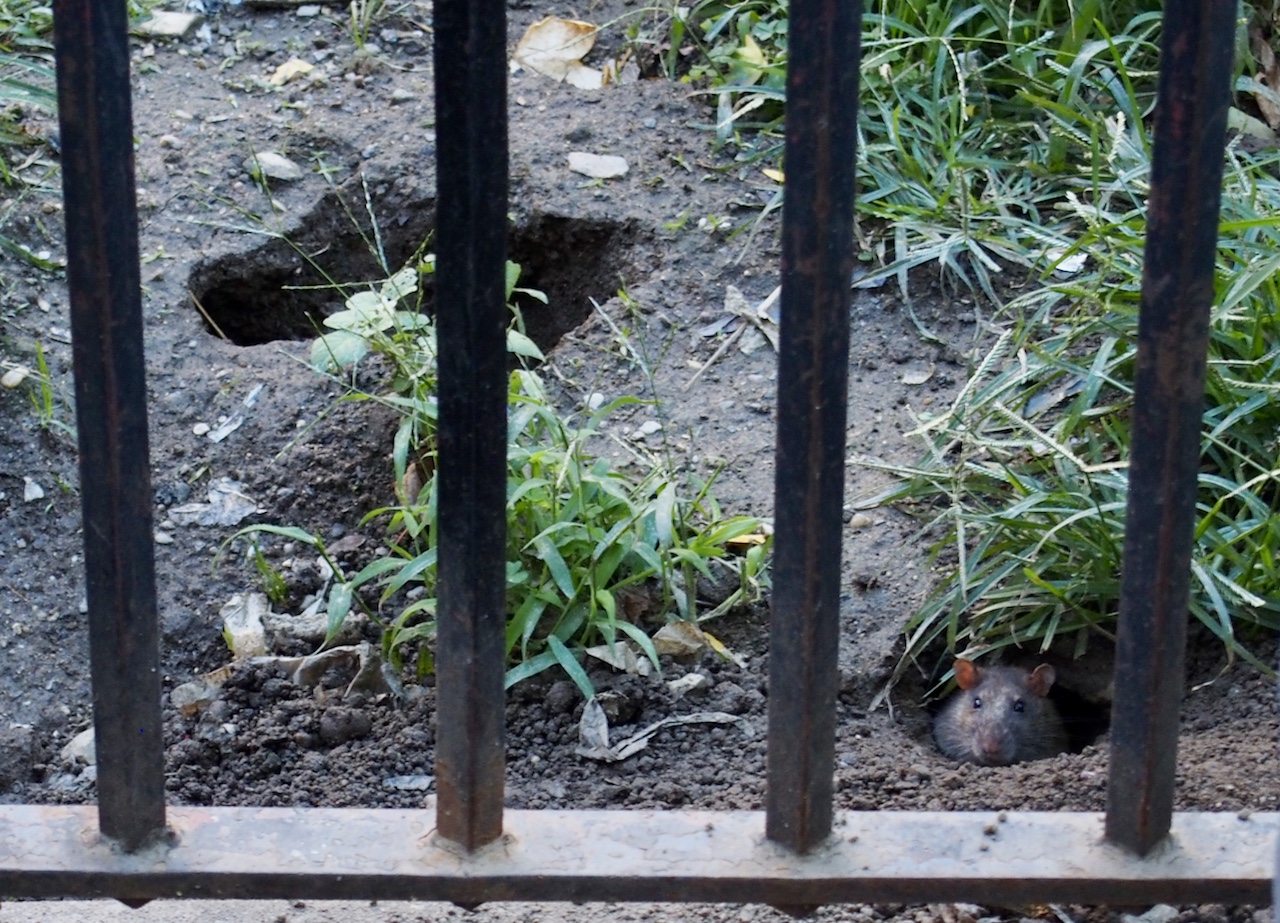
A few yards from the children’s playground at Patterson Houses, a family of rats enjoyed their own outing one afternoon in early October. Scurrying between the innards of an abandoned blue couch and a network of holes in the lawn, the rodents were bold enough to deter even the stray cat watching nearby.
Patterson tenant Megan Acosta, 28, said the rodents are a year-round presence at the New York City Housing Authority (NYCHA) complex in Mott Haven.
“Last summer, you would smell them outside. It would smell like dead rat,” said Acosta. “Even in the winter, you would see them hopping in the snow.”
Rats aren’t unique to public housing in the South Bronx, where a privately owned apartment building had the city’s highest number of rodent complaints in 2015, but they’re one of the many signs of disrepair at NYCHA developments. The city agency is faced with a capital needs deficit of $32 billion and a worsening rat problem, which one Tenants’ Association president has called a “state of emergency.”
In 2017, Mayor Bill de Blasio allocated millions to a rat reduction plan based on Department of Health and Mental Hygeine property surveys. While the mayor’s extermination efforts include NYCHA residences in the Grand Concourse area, Mott Haven and Melrose are actually the city’s most infested neighborhoods according to 311 complaints from the past five years.
Local exterminator Edward Jesberger, 28, said that rodent control now accounts for 60 percent of his workload. Jesberger believes that heavy construction in the South Bronx has led to the “very large influx” of rats he’s witnessed over the past three years.
“There’s so much building going on that they have nowhere else to go,” said Jesberger, owner of At Last Pest Control. “So, they’re going into commercial spaces, they’re going into homes.”
NYCHA’s issues with garbage disposal have also contributed to the rat infestation. Although the agency’s private contractor Sanitation Salvage is back on the job following a suspension this summer, Patterson residents said trash still piles up because the incinerator chutes inside the buildings are too small.
At the Claremont Rehab Houses in Melrose, rats invaded several apartments after NYCHA closed the basement compactor. Maria Forbes, one of the Tenants’ Association presidents, recorded a video of four rodents climbing across a resident’s sink and held a press conference about the “state of emergency” on Oct. 15.
“They came through the sheetrock and just started eating their way through,” said Forbes, 55. “It’s unfair to the tenants to live in such inhumane conditions.”
The Claremont complex will receive additional funding for rat removal through the Mayor’s plan, Health Department spokesperson Danielle De Souza said. The plan will provide upgrades such as bulk crushers and exterior compactors to 11 NYCHA buildings in the Bronx, but De Souza did not specify which measures had been taken at each location.
At Morris I and II, two of the highest priority developments for de Blasio’s initiative, NYCHA replaced the basement floors with concrete and now cleans the garbage area twice a month, according to Tenants’ Association President Barbara Holmes, 76.
Morris I resident Lenora Moore, 47, who had to call the fire department for a decomposing rat in her wall two years ago, said the renovations have helped “a little.”
“Before, [the rats] was just in front of the building flying back and forth,” said Moore, a former NYCHA caretaker in Brooklyn. “You still see them, but not as many.”
Exterminator Joel Nolasco, 33, explained that rats, like people, are drawn to the familiar. As long as they have access to trash and other food sources, they’ll return.
“They don’t want to explore a new territory, especially for a family of rats that grew up in that area,” said Nolasco, owner of Nuborn Pest Control. “Unless you do something to completely exclude the rats, they’re going to come back.”

